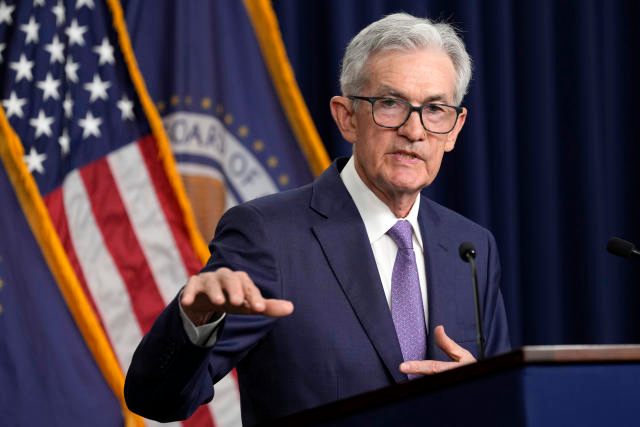Powell's heavy voice: thinking about policy balance refuses to reveal a timetable for rate cuts
Powell still declined to say anything about the time frame for a rate cut.
On July 2nd, Federal Reserve Chairman Jerome Powell made a significant statement, saying that the latest economic data indicates that the inflation rate is on a downward trend, but officials need to see more evidence before cutting interest rates.

In a panel discussion at the European Central Bank's monetary policy meeting held in Sintra, Portugal, yesterday, Powell stated that after some persistently high inflation reports at the beginning of 2024, the data from April and May "indeed suggests that we are on a downward trend in inflation." Powell added that we just want to understand that all the data we see is a true interpretation of underlying inflation.
Regarding the market's concern about interest rate cuts, Powell admitted that the Federal Reserve is carefully considering when to lower the benchmark interest rate. Since March 2022, the Federal Reserve has raised the benchmark interest rate for 11 consecutive times, and the current level of interest rates is 5.3%. The purpose of raising interest rates is to curb the most severe continuous inflation in the United States in forty years by slowing down the borrowing and spending of consumers and businesses. Under the prolonged process of raising interest rates, the inflation rate in the United States did indeed fall from the peak in 2022, but it is still high.
The Federal Reserve is now in a dilemma. Powell said that if the Federal Reserve cuts interest rates too early, inflation may accelerate again, forcing policymakers to reverse direction and implement punitive interest rate hikes. However, if the Federal Reserve waits too long to reduce the cost of borrowing, it also risks weakening the economy.
Powell said that the balance of monetary policy is indeed the primary issue we are thinking about.
Last Friday, data showed that the prices in the United States from April to May hardly changed, which is the most moderate in more than four years. The U.S. government stated that compared with the same period last year, the inflation rate in May fell from 2.7% in April to 2.6%, and prices have been well controlled.
In addition, excluding the more volatile food and energy costs, the core inflation in the United States from April to May also hardly rose. Compared with the same period last year, the core inflation rate fell from 2.8% in April to 2.6%. Compared with the beginning of this year, the latest inflation data has greatly improved.
Regarding employment, Powell said that the fundamentals of the U.S. economy and the job market are still healthy, which means that the Federal Reserve can slowly decide when it is suitable to cut interest rates.
Powell also commented that the job market is "cooling appropriately," which may mean that the job market will not exacerbate inflationary pressures through rapid wage growth. "It does not seem to be heating up, nor does it bring a big problem to future inflation." "It looks like it is doing what you want it to do, which is to cool down over time."
However, Powell still refused to reveal any timeline for interest rate cuts.
Currently, according to the CME "FedWatch": The probability of the Federal Reserve keeping interest rates unchanged in August is 91.7%, and the probability of cutting interest rates by 25 basis points is 8.3%. The probability of the Federal Reserve keeping interest rates unchanged in September is 31.2%, the cumulative probability of cutting interest rates by 25 basis points is 63.4%, and the cumulative probability of cutting interest rates by 50 basis points is 5.5%.
Most economists believe that the Federal Reserve will cut interest rates for the first time in September and may cut interest rates again before the end of the year.
·Original
Disclaimer: The views in this article are from the original Creator and do not represent the views or position of Hawk Insight. The content of the article is for reference, communication and learning only, and does not constitute investment advice. If it involves copyright issues, please contact us for deletion.